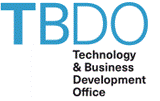
A method based on nucleosome detection by high resolution microscopy reliably assesses pluripotency much faster than the current gold standard without the use of animals.
It can be used to identify the pluripotent potential of stem and iPS cells.
Technology:
Stem cell research has grown significantly over the last years and the assessment of stemness will be critical both for basic and applied stem cell research, as well as for the manufacture of stem cell-based products. Now, stem cells are characterized by classical methods such as stem cell gene expression analysis and their propensity to differentiate in vivo and form teratomas. Although time consuming (up to weeks), relatively costly and involving animal ethical considerations, the teratoma assay is still the most accepted technology for pluripotency assessment. Using quantitative super-resolution microscopy STORM (Stochastic Optical Reconstruction Microscopy) combined with histone labeling and a proprietary algorithm for image analysis and interpretation, researchers have found that nucleosomes associate in discrete clutches along the chromatin fiber, and that clutch size correlates with cell identity and pluripotency. The methodology, combined with a scorecard for standards comparison, can help predict the pluripotent potential of stem and iPS cells (stemness) in a way, which is as reliable as existing methods, but faster and animal-free.
Advantages:
- No need for laboratory animals in line with 3R principles
- Reduces time and costs
- Allows for single cell characterization
- Can have multiple applications (e.g. evaluation of cell heterogeneity within an iPSC clone, identification of the best (more pluripotent) iPCS clones, determination of the effects of drugs on the maintenance of pluripotency, etc.)
- Developed by two leader scientists in the fields of stem cell research and regeneration (Maria Pia Cosma, from The Centre for Genomic Regulation), and super-resolution microscopy (Melike Lakadamyali, from The Institute of Photonic Sciences).
References:
Ricci et al. Chromatin Fibers Are Formed by Heterogeneous Groups of Nucleosomes In Vivo. (2015) 160(6):1145–1158.
Related animation.


